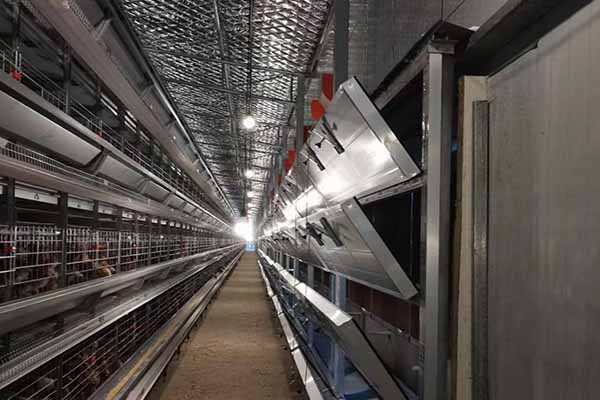How to Start a Chicken Farm in Ontario: A Comprehensive Guide
Time : 2025-04-18
Starting a chicken farm in Ontario can be an exciting venture. Whether you’re looking to raise chickens for eggs, meat, or simply as a hobby, there are several key steps to ensure your farm is successful. In this article, we’ll walk you through the process of how to start a chicken farm in Ontario, from planning to operation and beyond.
1. Research and Planning
Before you dive into the world of chicken farming, it’s crucial to do your homework. Here’s what you need to consider:
1.1 Understand the Market
Research the local demand for chicken products. Check out local farmers’ markets, grocery stores, and restaurants to see if there’s a market for the type of chicken products you plan to produce.
1.2 Learn About Chicken Breeds
Different breeds of chickens are suited for different purposes. For example, some breeds are better for laying eggs, while others are more suitable for meat production. Familiarize yourself with the various breeds and their characteristics.
1.3 Determine Your Farm’s Purpose
Decide whether your farm will focus on eggs, meat, or both. This will influence the breed of chickens you choose, the size of your farm, and the equipment you’ll need.
2. Legal Requirements
Ontario has specific regulations for chicken farming. Make sure you comply with the following:
2.1 Business Registration
Register your farm as a business with the Ontario Ministry of Agriculture, Food and Rural Affairs (OMAFRA). This will give you access to various resources and programs designed to support farmers.
2.2 Zoning Approval
Check with your local municipality to ensure that your farm is zoned for agricultural use. You may need to apply for a permit or variance if your property is in a residential area.
2.3 Health and Safety Regulations
Familiarize yourself with the Ontario Food Safety and Quality Act and the Animal Health and Welfare Act. These regulations will help ensure the health and safety of your chickens and the consumers.
3. Location and Site Preparation
Choosing the right location is essential for a successful chicken farm.
3.1 Choose the Right Location
Look for a property that offers a good balance of privacy, accessibility, and a suitable climate for chickens. Consider factors like proximity to markets, water sources, and transportation routes.
3.2 Site Preparation
Prepare your site by clearing vegetation, grading the land, and installing necessary infrastructure such as pens, feeders, and waterers. Make sure your chickens have enough space to roam and lay eggs.
4. Building Your Chicken Coop
A well-constructed coop is essential for the health and safety of your chickens.
4.1 Design Your Coop
Design a coop that provides protection from predators, harsh weather, and excessive heat or cold. Consider the following:
– Adequate ventilation
– Roosts for chickens to sleep on
– Nest boxes for egg-laying hens
– A secure door for access
4.2 Materials and Construction
Choose durable materials that can withstand the elements. Consult with a local builder or farmer to ensure your coop is up to code.
5. Chicken Breeds and Raising Practices
Selecting the right chickens and implementing proper raising practices is key to a successful farm.
5.1 Choose Your Breed(s)
As mentioned earlier, choose breeds that align with your farm’s purpose. Consider factors like growth rate, egg production, and temperament.
5.2 Feeding and Watering
Provide a balanced diet and clean water at all times. Consult with a poultry nutritionist to ensure your chickens receive the proper nutrients.
5.3 Health Management
Regularly monitor your chickens for signs of illness or stress. Implement a routine vaccination and deworming schedule to prevent disease.
6. Marketing and Sales
Once you have your chickens and farm up and running, it’s time to market your products.
6.1 Develop a Marketing Plan
Create a marketing plan that includes direct sales, such as selling to local markets, restaurants, or through a farm gate, as well as online sales through your website or social media platforms.
6.2 Branding
Develop a strong brand identity for your farm, including a memorable name, logo, and tagline. This will help you stand out in the market.
6.3 Build Relationships
Networking with local businesses, farmers, and consumers can help you build a loyal customer base.
7. Ongoing Management and Growth
Running a chicken farm is a continuous process of management and growth.
7.1 Stay Informed
Keep up-to-date with industry trends, regulations, and best practices. Attend workshops, webinars, and trade shows to expand your knowledge.
7.2 Adapt and Innovate
Be willing to adapt your farm to changing market demands and technologies. Innovation can help you stay competitive and increase profitability.
7.3 Seek Support
Don’t hesitate to seek help from local agricultural organizations, government programs, and fellow farmers. The more support you have, the better your chances of success.
Conclusion
Starting a chicken farm in Ontario can be a rewarding experience. By following these steps and staying committed to the process, you can build a successful farm that meets the needs of your customers and the community. Happy farming!












